Tattoo stencils

Henna tattooing is a whole art that requires different elements. An important component is stencils, which have their own advantages. It is an auxiliary tool that is used not only by beginners but also by professionals. You can find out more useful information about this device if you want to try yourself in the art of applying henna drawings.

Pros and cons of using
A tattoo can be both durable and temporary, and for the latter, natural paint is used - henna, which has a number of positive characteristics. Novice artists use special stencils with which you can apply drawings without errors and inaccuracies, and this is important. Such blanks will be a useful acquisition in the arsenal of not only a beginner, but also a professional.

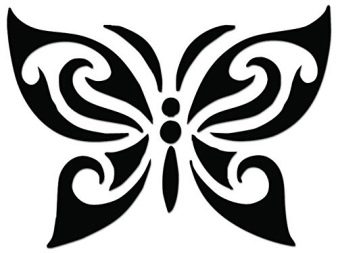
The main task of the device is to facilitate the work and speed up the process of applying a particular pattern. A stencil can be purchased or made by hand, it does not take much time. The main advantage of the tool is that it can be printed in any style, it is enough to pick up the samples of interest, and now you can apply a beautiful drawing or symbol to the body. Of course, by using a template, the risk of error is minimized.

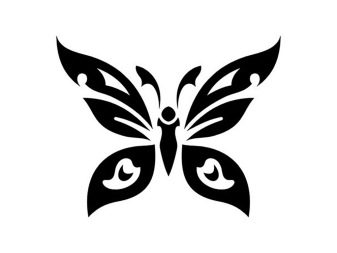
On the net you can find a huge variety of blanks for every taste, which also increases their popularity. It should be noted that if there are repeating elements in the drawing, using a template will allow you to do everything the same and neatly, each line will be identical, all the angles and width of the contours are observed.Such stencils are used by many beginners who do not yet have experience and professionalism. The procedure time is reduced significantly, this saves strength and energy.

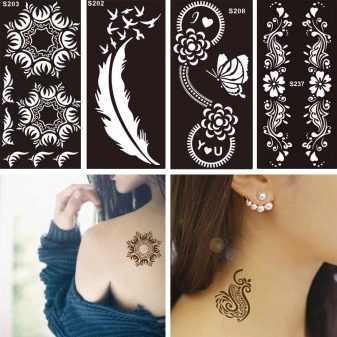
As for the cons, there are practically none, if you do not take into account the fact that some templates cannot be reused, since they are corrupted. But this is not a problem, because new samples can always be printed.
Thus, we can say with confidence that the blanks have many advantages that attract artists who want to do different tattoos, but they still do not have enough experience in this area.

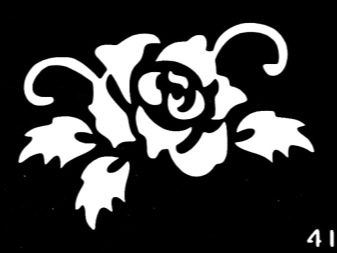
Views
The market offers a wide range of stencils for different designs. They differ in size, style and other characteristics. Some are used to apply real tattoos, while others are used for mehendi, but they all meet the requirements and wishes of the masters. The templates have characteristic slots, which are filled with paint, it is enough just to correctly fix the sketch on the body, and then use henna or a tattoo machine.
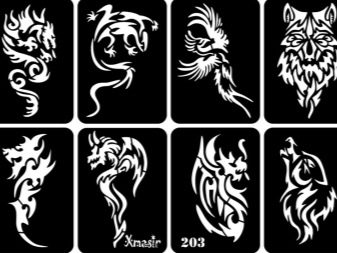

Stencils that are offered in stores are most often made from a special film - this is a canvas with an adhesive base. Such templates are disposable, they are perfectly fixed on the body, have flexibility, and do not cause pain when removed.
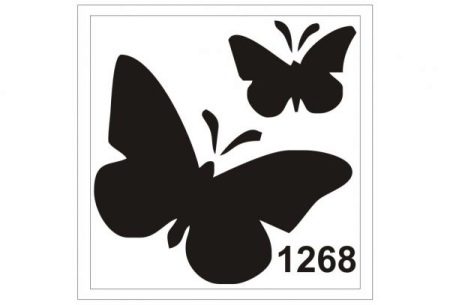
You can also find reusable silicone blanks that attach to the skin without glue. Due to their elasticity, they can take a curved shape, so they can be applied to the arms, neck. After staining, it is enough to rinse the stencil with water, dry it and can be reused. Rubber blanks attract attention, as they are durable, fit well on the surface and do not let paint over the borders of the slots.
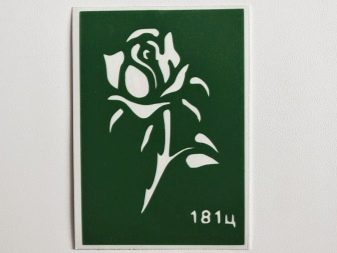
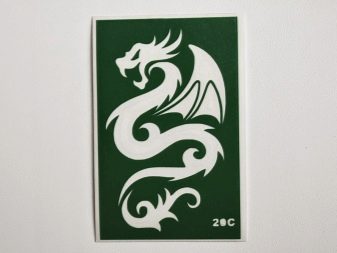
If the master is already experienced enough, he can create such blanks on his own, especially if there is an idea for an interesting sketch that cannot be found either in stores or on the network. The specialist uses available materials and drawing skills, in the process something unique and original is obtained that can attract a client.
Stencils can have several layers, at least two, and they are suitable for simple drawings, but if the sketch is rather complex, it is better to choose dense material. Depending on the size of the tattoo, the blanks are small, medium and large. If this is a purchased stencil, it is often one-piece, but when you need to make a template yourself, sometimes you have to print everything out in fragments and use them in the application process.


How to do it yourself?
If you have the skills of an artist and come up with an awesome drawing idea, you can make a template yourself at home. You will need stencil paper, silicone or special film depending on your personal requirements. Take the desired piece of material so that it corresponds to the scale of the future sketch, while leaving a margin of 1 cm on all sides. Apply the design to thin paper by hand or print it. Then you can attach the sketch to the self-adhesive tape or silicone base.
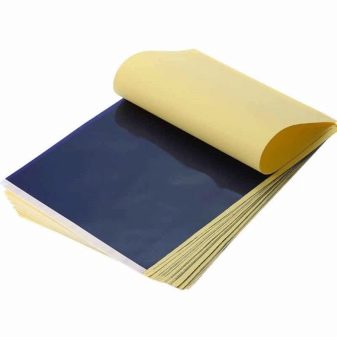
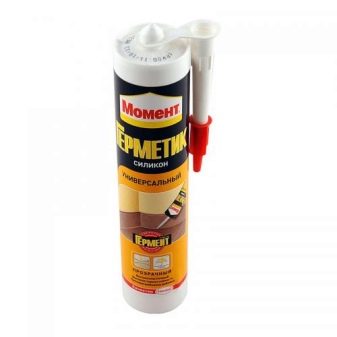
An essential tool for such delicate work is a paper knife; take with a small blade to keep the lines sharp. Hold the template with one hand and gently press down on the outline with the other, pushing the paper along with the film or silicone backing. If the line is long and without corners, try not to pull your hand off and not stop - this will avoid negligence and achieve integrity. Once all the slots are ready, the thin paper is detached from the base.
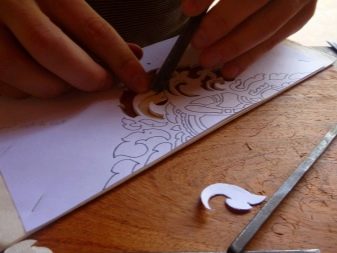
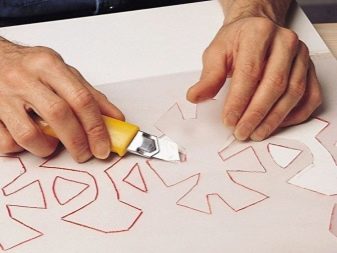
If you found a beautiful sketch on the Internet and want to make a template out of it for further work, just print it on plain paper and then do the same. Many craftsmen prefer to create stencils on their own, as they have many ideas for drawings that they want to see in reality on the body.In addition, works of authorship are always in great demand, as they are unique.


You can start developing your own designs to diversify your assortment and generate interest from potential customers. Temporary sketches are thematic - New Year, love, symbolic, mehendi, and so on. And for permanent, the assortment should be much wider, but much depends on the abilities of the master and his willingness to experiment.
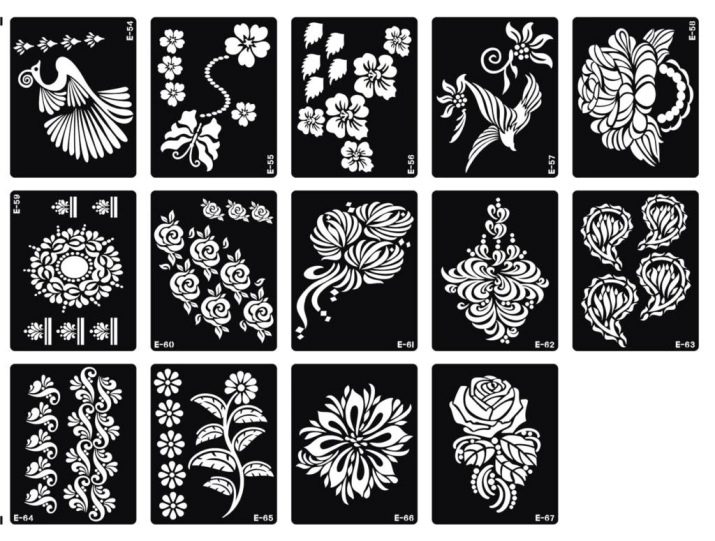
If you have never used a stencil, but want to try it, it is better to study the instructions first to get the desired result. This is a simple process, no special skills are required, but there is a certain sequence of actions.
You can start your workouts with a piece of glass to which the sketch is attached, after which you can start applying paint. It is enough to do this several times to fill your hand, and then proceed to real henna tattoos. It is important to scrub the skin area well and apply eucalyptus oil.
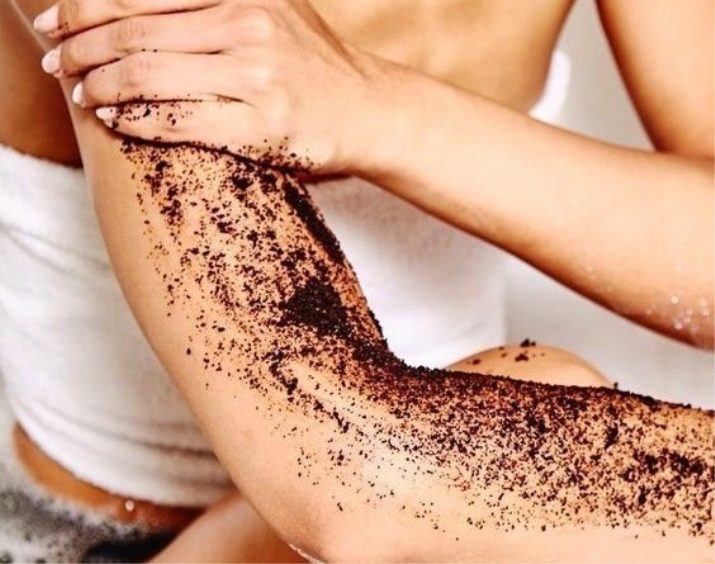
Then the stencil is attached. If the model is purchased, self-made templates are fixed either with adhesive plaster or tape of the choice of the master. Start filling the blanks with paint, you can go to the template, because the excess will then be washed off. It is important to make sure that the stencil is securely fixed and does not slip, this will prevent the henna from spreading.
Once all the voids are painted over, remove the blank and leave the drawing to dry so that the paint is well absorbed.
If the template is made of silicone, rinse thoroughly with water and place on a towel. Now you can try using stencils to expand your skills as a craftsman.









